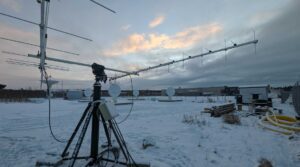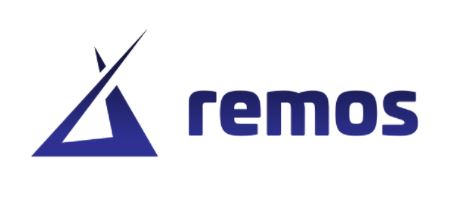Introduction
Satellite ground stations have long been the unsung heroes of space technology. While much of the public’s fascination lies with the rockets soaring through the cosmos or the satellites orbiting our planet, the ground stations play a critical role in ensuring that data is transmitted, received, and processed efficiently. These stations serve as the vital communication hubs between Earth and space, enabling everything from weather forecasting to global internet coverage and national security operations. Recent innovations in ground station technology are not only enhancing the capabilities of satellites but are also setting the stage for a new era of connectivity and exploration.
The Need for Innovation in Ground Stations
Historically, satellite ground stations were large, immovable installations with massive parabolic antennas, often requiring vast amounts of land and resources to maintain. These ground stations were designed to communicate with specific satellites in fixed orbits. However, the rapid advancement in satellite technology, including the deployment of small satellites and large constellations, has significantly increased the demand for more versatile and dynamic ground station infrastructure.

The primary challenge facing traditional ground stations is their inability to efficiently handle the growing volume and variety of satellite traffic. With the surge in low Earth orbit (LEO) satellites, which move quickly across the sky and require near-continuous handovers between ground stations, the old model is becoming obsolete. Furthermore, as we push further into deep space exploration, ground stations must be capable of handling more complex communication requirements over greater distances. This necessitates innovation, and the industry has responded with several groundbreaking technologies.
Virtualized Ground Stations and Cloud Integration
One of the most significant innovations in ground station technology is virtualization. Virtualized ground stations leverage cloud-based services to provide more flexible, scalable, and cost-effective solutions for satellite communication. Instead of relying on physical hardware at a fixed location, virtualized ground stations utilize software-defined radios (SDRs) and cloud infrastructure to simulate traditional ground station functions. This technology allows operators to access ground station capabilities as a service, eliminating the need for costly infrastructure investments.
Amazon Web Services (AWS) has been at the forefront of this revolution with its AWS Ground Station service, which offers satellite operators a fully managed network of ground stations around the world. By integrating ground station operations into the cloud, AWS provides unprecedented scalability and flexibility, allowing satellite operators to access data from their satellites in real time and on-demand, regardless of their location. This innovation reduces the barriers to entry for new players in the satellite industry and facilitates a more competitive and dynamic market.
The Rise of Multi-Mission Ground Stations
Another noteworthy development is the emergence of multi-mission ground stations. Unlike traditional ground stations designed for specific satellites or missions, multi-mission ground stations are capable of communicating with a wide range of satellites operating in different orbits and frequency bands. Companies like Remos Space are developing such solutions where virtualized transceiver brings flexibility and scalability for large ground station networks, especially to handle large constellation operations. This capability is achieved through the use of advanced software and reconfigurable antennas that can be dynamically adjusted to track multiple satellites and switch between different communication protocols.

Multi-mission ground stations provide significant advantages in terms of cost and operational efficiency. By consolidating multiple ground station functions into a single, versatile platform, operators can reduce redundancy and maximize resource utilization. This innovation is particularly beneficial for large satellite constellations, such as SpaceX’s Starlink or OneWeb, which require continuous and simultaneous communication with hundreds or thousands of satellites. Multi-mission ground stations ensure seamless connectivity across the entire constellation, enhancing performance and reducing operational complexity.
Phased Array Antennas and Automation
Phased array antennas represent another major breakthrough in ground station technology. Unlike traditional parabolic antennas that require mechanical movement to track satellites, phased array antennas use electronic steering to direct radio waves in different directions. This capability allows ground stations to track multiple satellites simultaneously without any mechanical parts, significantly reducing maintenance costs and increasing reliability.
Phased array technology is particularly well-suited for tracking LEO satellites, which move rapidly across the sky and require constant adjustment of the ground station’s antennas. Moreover, phased array antennas can be easily integrated with automated systems, enabling fully autonomous ground station operations. Automation reduces the need for human intervention, lowers operational costs, and improves the overall efficiency of satellite communications.
Artificial intelligence (AI) and machine learning (ML) are also playing a crucial role in modernizing satellite ground stations. These technologies are being used to optimize frequency allocation, predict satellite movements, and manage network traffic, ensuring that ground stations operate at peak efficiency. AI-driven systems can analyze vast amounts of data in real time to make intelligent decisions about resource allocation, mitigating the risk of interference and maximizing the throughput of satellite communications.
Implications for the Future
The innovations in satellite ground station technology are having profound implications for various sectors, including telecommunications, defense, climate science, and space exploration. Enhanced ground station capabilities are enabling more efficient and cost-effective satellite operations, which in turn is driving down the cost of satellite-based services. This democratization of space access is opening up new opportunities for businesses, governments, and research institutions around the world.
For instance, improved ground station technology is pivotal for the success of upcoming lunar and Mars missions. NASA’s Artemis program and SpaceX’s ambitious plans for Mars colonization will rely heavily on ground stations capable of managing long-distance, high-bandwidth communications. Additionally, the expansion of global satellite internet services, such as those offered by Starlink and Project Kuiper, will depend on advanced ground station networks to deliver high-speed internet to remote and underserved regions, bridging the digital divide and fostering global connectivity.
Conclusion
Satellite ground station innovations are driving a quiet revolution in the space industry, transforming the way we communicate with and manage satellites. From virtualization and cloud integration to multi-mission capabilities, phased array antennas, and AI-driven optimization, these advancements are redefining the ground station landscape. As we stand on the cusp of a new era of space exploration and connectivity, ground station technology will play an increasingly pivotal role, not just in supporting current satellite operations but in enabling the bold visions of our space-faring future. The continuous evolution and adoption of these innovations will be critical to ensuring that our reach into space is both sustainable and expansive.
















